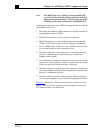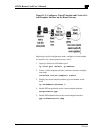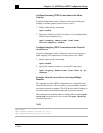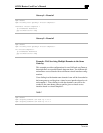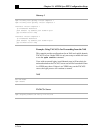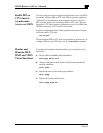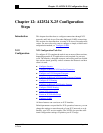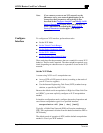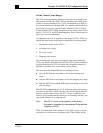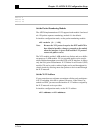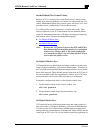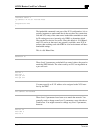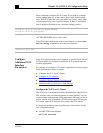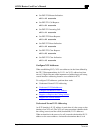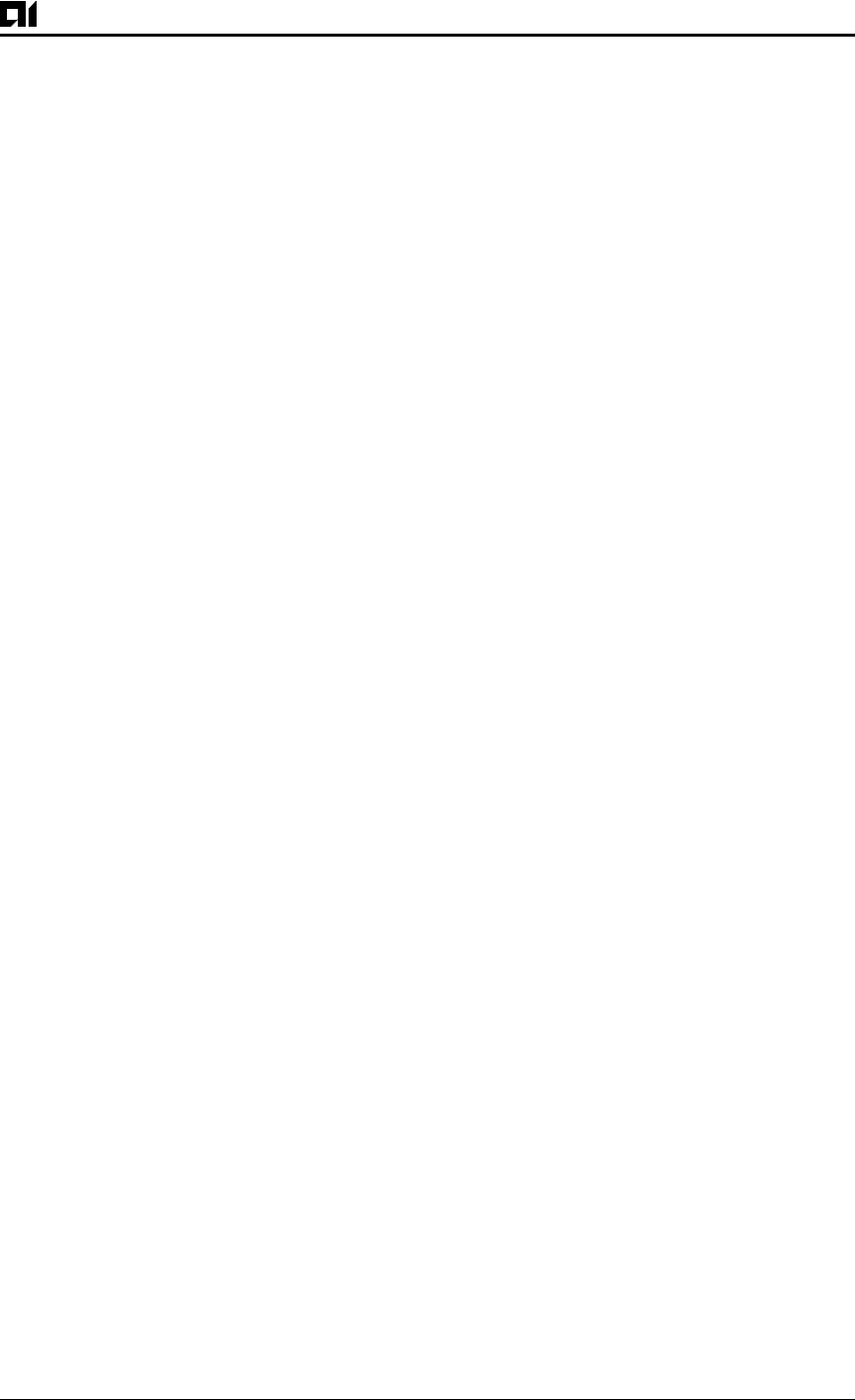
Chapter 12: AI2524 X.25 Configuration Steps
August 1997 Page 12-3
2524UM
Set the Virtual Circuit Ranges
The X.25 protocol maintains multiple connections over one physical
link between a DTE and a DCE. These connections are called virtual
circuits or Logical Channels (LCs). X.25 can maintain up to 4095 vir-
tual circuits numbered 1 through 4095. You identify an individual vir-
tual circuit by giving its Logical Channel Identifier (LCI) or Virtual
Circuit Number (VCN). Many documents use the terms virtual circuit
and LC, VCN, LCN, and LCI interchangeably. Each of these terms re-
fers to the virtual circuit number
An important part of X.25 operation is the range of VCNs. VCNs are
broken into four ranges (listed here in numerically increasing order):
1. Permanent virtual circuits (PVCs)
2. Incoming-only circuits
3. Two-way circuits
4. Outgoing-only circuits
The incoming-only, two-way, and outgoing-only ranges define the
VCNs over which a Switched Virtual Circuit (SVC) can be established
by the placement of an X.25 call, much like a telephone network es-
tablishes a switched voice circuit when a call is placed.
The rules about DCE and DTE devices initiating calls are:
z
Only the DCE device can initiate a call in the incoming-only
range.
z
Only the DTE device can initiate a call in the outgoing-only range.
z
Both the DCE device and the DTE device can initiate a call in the
two-way range.
The ITU-T Recommendation for X.25 defines incoming and outgoing
in relation to the DTE or DCE interface role; this documentation uses
the more intuitive sense. Unless the ITU-T sense is explicitly refer-
enced, a call received from the interface is an incoming call and a call
sent out the interface is an outgoing call.
Note: The ITU-T carries out the functions of the former
Consultative Committee for International Telegraph and
Telephone (CCITT).
There is no difference in the operation of the SVCs ranges except th
restrictions on which device can initiate a call. These ranges can be



